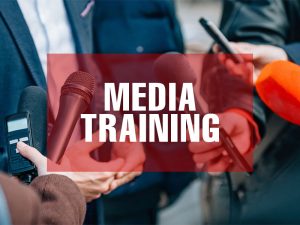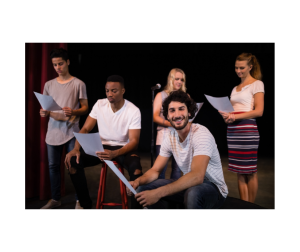Media Training Navigation
The media landscape is a swirling vortex of opportunities and pitfalls. For professionals thrust into the spotlight, navigating this realm can feel like tightrope walking without a net. Enter media training: the transformative art of equipping individuals with the tools and confidence to not only survive, but thrive under the media microscope.

Why is media training a game-changer?
Consider two scenarios:
Scenario A: A nervous executive fumbles through an interview, offering vague answers and inadvertently creating negative headlines.
Scenario B: A poised spokesperson delivers a clear, concise message, confidently deflecting challenging questions and leaving a lasting impression of expertise and control.
The difference? Media training.
Beyond mastering soundbites and interview techniques, effective media training goes deeper. It delves into the core of communication, building the skills and self-awareness needed to:
- Craft Compelling Narratives: Transform complex ideas into clear, concise, and engaging stories that resonate with the audience.
- Anticipate the Unexpected: Prepare for curveball questions and challenging situations, ensuring composure and control under pressure.
- Project Confidence and Credibility: Develop a commanding presence that exudes expertise and trustworthiness, even in high-stakes scenarios.
- Deliver Your Key Message: Hone the art of staying on point, ensuring your core message shines through regardless of the interview’s direction.
Now let’s explore the key pillars that empower this transformation:

1. Mastering the Message: Media training isn’t about memorizing scripts; it’s about crafting impactful narratives. Participants learn to identify their core messages, distill complex ideas into digestible soundbites, and weave them into compelling stories that connect with the audience.
2. Understanding the Media Landscape: From broadcast interviews to social media interactions, participants gain insights into the nuances of different media platforms, allowing them to tailor their approach and communication style accordingly.
3. Honing Interview Skills: Simulated interviews provide a safe space to practice under pressure, receive constructive feedback, and develop strategies for handling tough questions, maintaining control, and staying on message.
4. Building Confidence and Charisma: Through voice and body language coaching, participants learn to project confidence, manage nerves, and command attention, ensuring their message lands with impact.
5. Crisis Communication Strategies: Media training empowers individuals to anticipate potential crises, develop proactive communication plans. Also effectively manage negative press situations, minimizing reputational damage.
The benefits of media training extend far beyond media interactions. Effective communication skills honed in training sessions translate into everyday interactions, enhancing leadership presence, influencing stakeholders, and driving business success.
Investing in media training is an investment in communication mastery. It’s the difference between being swept away in the media current and confidently navigating it, shaping narratives, and emerging as a leader. In today’s dynamic world, where communication holds the key to success, media training is no longer a luxury – it’s a necessity.
Ready to transform your communication game? Seek out reputable media training programs and embark on the journey from media amateur to communication champion. The spotlight awaits, and your voice is ready to shine.













